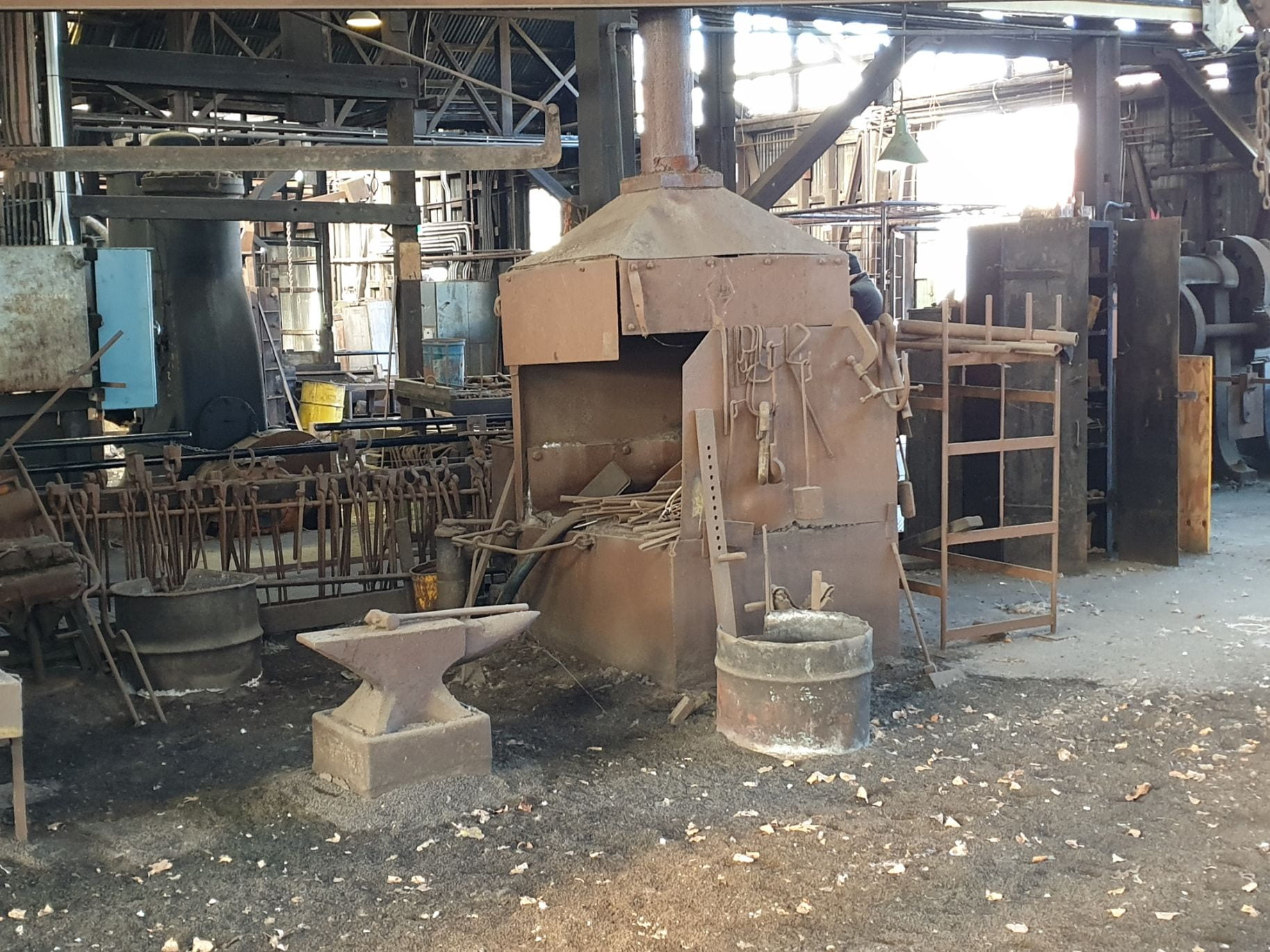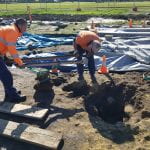Oh my goodness! Another month has gone by! And what do we have to show for it? Well, there’s a fresh mound of excavated dirt on the spoil heap and a pile of artefacts sitting in the lab. More of the foundry has been pared away in our relentless destructive pursuit for knowledge. In fact, where we have been working in the west of the space, most – if not all – of the foundry period (loosely defined as post-1854) has been excavated. Progress indeed!
As many of you will remember, the west space was characterised by a layer of orange clay. A series of darker patches of silt seemed to mark the location of intrusions (pits/postholes) into this layer – and so it turned out to be. We found at least three rectangular depressions made into the clay, each of which had been filled with a dark silt deposit. These depressions likely marked the location of equipment or workbenches. The ‘depression’ had been formed when the object had been placed on the ground and the orange clay then laid around it. Adjacent to these depressions were a series of four postholes. Two of these were likely intrusions from the post-convict period, but the other two marked the position of other pieces of equipment (what they were, we have no idea – yet).
With all these new features recorded and excavated, we excavated away the orange clay. Up to 0.10m thick, this clay was actually a mixture of pure orange clay and a reddish brown clay. The latter colouration indicated that the clay had been exposed to heat – which was not unexpected in a foundry and blacksmith. Very few artefacts were recovered from the clay, indicating to us that it had been laid down as a single event (rather than different stages of occupation). The clay neatly peeled off to reveal a completely new and different series of deposits – rubble, silts and some sandstone footings. This, at last, appears to be the deposits associated with the 1830s-40s workshops (when it operated as a shoemakers and, potentially, a blacksmith).
Work has also been occurring in the space’s eastern extent. Here we have been removing the dark coloured deposit which occupies almost 1/3 of the area. Choc-a-block full of charcoal and coal, this deposit is highly likely to relate to smithing activity. This hypothesis is supported by the presence of an extremely compacted smithing floor below. This surface is formed from years of accumulated metal-working byproduct that has compressed down to a layer about 5cm thick. The smithing floor surrounds two large pits, both of which are full of detritus from when the foundry and smith was closed in 1877. This is much like occurred in the pit where the anvil was found. At the moment we are not sure what exactly the pits were used for. Their situation near the smithing floor suggests that they may have been to secure the anvil, as well as a gantry that might have been next to it.

Sigh. It’s another big pit. You can see it has a distinctive ‘figure-of-eight’ shape, denoting the fact that it is actually formed from two pits close together. The smithing floor is to the right of the pit

I go places! This is a blacksmith’s workstation at Inveresk Railyards, Launceston. Note the furnace, with the anvil, quenching bucket and gantry close by
As with all things archaeological, it’s a bit of a mystery. Until we hit upon a workable theory and then it is fact.




You’ve been very busy Richard … xxx Lindsay
We’re just like little bees